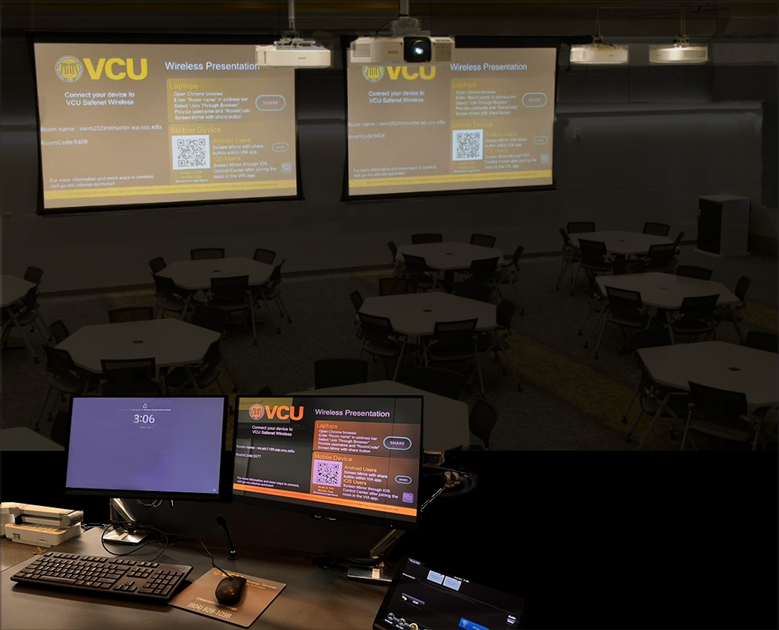Commitment and Achievements

The "Power" of Education
What happens when classrooms are empty, but AV systems are left on? Years ago, the Media Support Services (MSS) team from Academic Technologies implemented standard system designs and procedures, and diligently maintained them through the years. Expanding upon the existing environment, a Crestron “Fusion” Roomview server, hosted at VCU, is now used for monitoring, controlling and reporting AV systems in 450 classrooms.
Mariusz Ostasz, an audio visual programmer in the MSS Engineering and Design team, developed “ECO”, a programming function that monitors and shuts down classroom AV systems to reduce cost and increase the lifecycle of the equipment.
When AV systems are left on and there is no occupancy detected in the rooms, and no one interacting with the UI, the control processor is set to turn off the systems at a designated time (“ECO time”). The processor counts the number of hours elapsed until the next time someone interacts with the Classroom UI, and reports these numbers to the Fusion server. This total number of hours is called "ECO savings", and the countdown continues, even when there is a preset shutdown time.
Fusion provides an annual report of the total ECO savings, which we use to calculate a breakdown of electricity savings and display runtime usage. Display usage is rated by hours, so each hour they are not on results in cost savings. Through Mariusz's efforts, we can show real ECO savings.
| For the period of July 1, 2023 - July 1, 2024 | current year | previous year |
|---|---|---|
| average commercial electricity rate in Richmond | 9.07 c/kWh | 6.86 c/kWh |
| average electrical cost to run one of our displays | 4.40 c/hr | 3.3 c/kWh |
| ECO savings | 181,548 | 156,977 |
| Display hours saved (calculated using a multiplier for the number of displays in a classroom) | 248,437 | 186,490 |
| Cost savings for hardware operation | $57,338.34 | $43,041.20 |
The increased cost of electricity, larger number of systems (STEM was added) and larger number of displays per room in some cases (STEM 112, 202, 216), are major contributing factors to increased savings this fiscal year.
| Fun Facts |
||
| STEM Building Room 112: 4 displays Room 202: 10 displays Room 216: 10 displays Combined, the total saved is 38,830 display/hours! |
Top 3 spaces that reported the highest "ECO hours saved" were: STEM room 108A: 3,551 Egyptian Auditorium: 3,539 Lyons room 444: 3,136 |
Total number of times that ECO has shut the systems down: 8,570 This is equivalent to 1 room shutting down somewhere on campus every hour! |
Want to learn more? Visit go.vcu.edu/academictech
 A 2023 presentation by the Senior Manager of the AT Learning Systems team, takes a deep dive into IT governance and its impact within higher education environments. The slideshow, Governing Better Outcomes: Canvas Apps at VCU, focuses on VCU's central Learning Management System (LMS) Canvas, and the evolution of a governance process for installing apps/third party tools using the Learning Tools Interoperability (LTI) standard.
A 2023 presentation by the Senior Manager of the AT Learning Systems team, takes a deep dive into IT governance and its impact within higher education environments. The slideshow, Governing Better Outcomes: Canvas Apps at VCU, focuses on VCU's central Learning Management System (LMS) Canvas, and the evolution of a governance process for installing apps/third party tools using the Learning Tools Interoperability (LTI) standard.